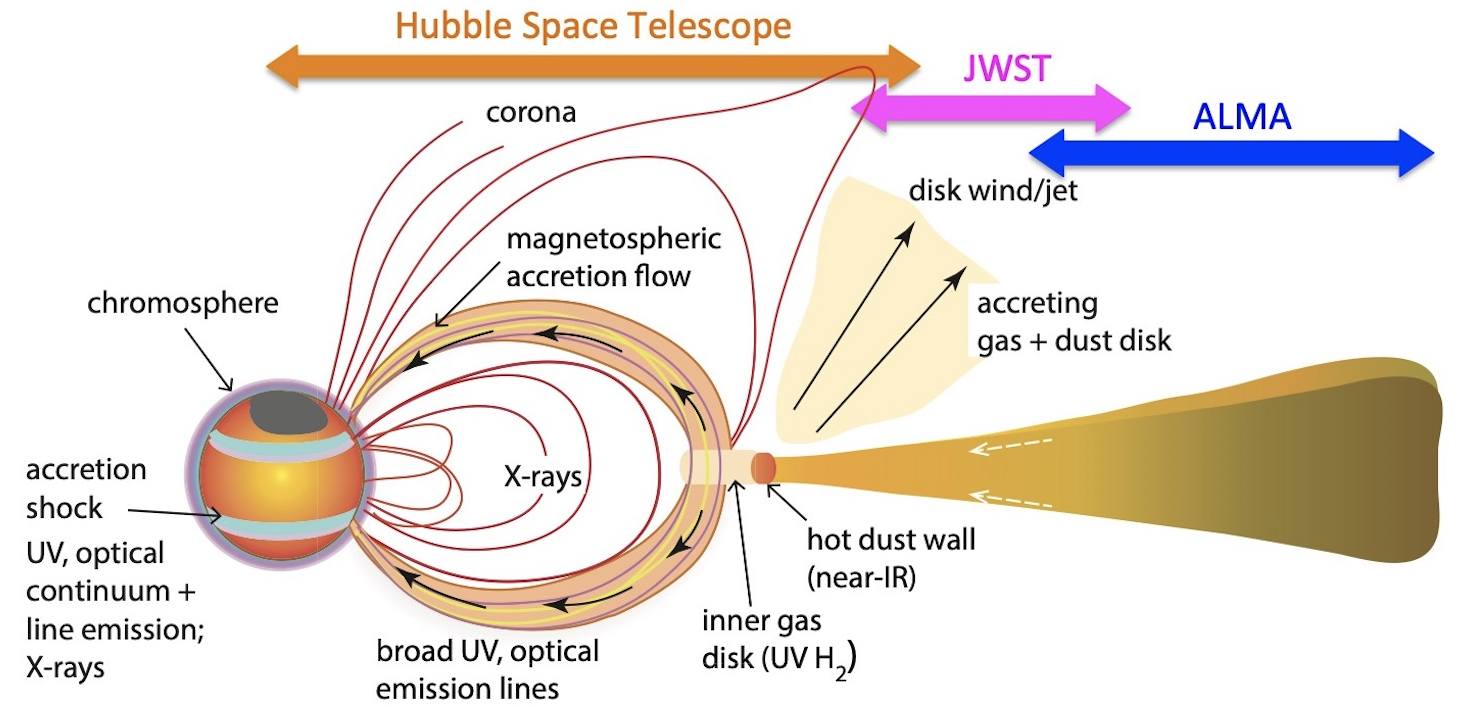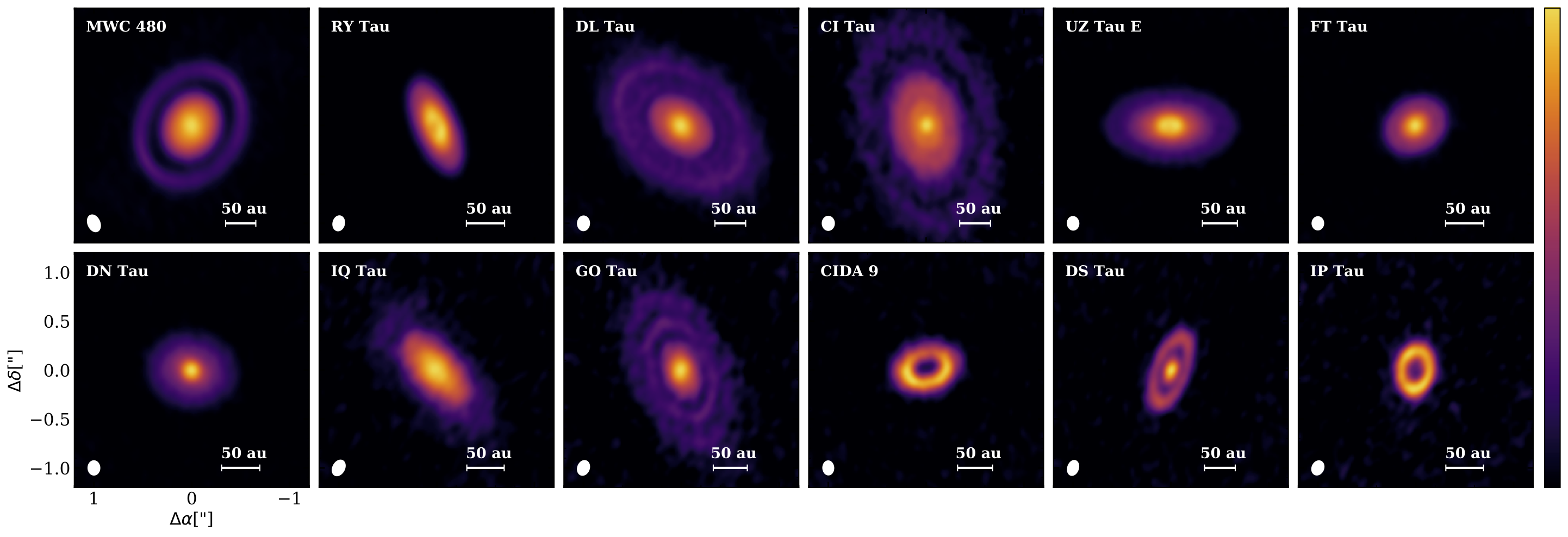Research in the Herczeg group
 My research interests focus on star and planet formation, with a particular interest in how stars (and planets) accrete from their disks, in substructures of protoplanetary disks, and in the evolution of stars and disks. We analyze single-epoch and time domain observations obtained with a wide array of ultraviolet, optical/infrared, and mm telescopes, including Hubble Space Telescope, JWST, EAO James Clerk Maxwell Telescope, VLT, Gemini, and many others, in addition to public surveys such as Gaia.
Several projects are listed below.
My research interests focus on star and planet formation, with a particular interest in how stars (and planets) accrete from their disks, in substructures of protoplanetary disks, and in the evolution of stars and disks. We analyze single-epoch and time domain observations obtained with a wide array of ultraviolet, optical/infrared, and mm telescopes, including Hubble Space Telescope, JWST, EAO James Clerk Maxwell Telescope, VLT, Gemini, and many others, in addition to public surveys such as Gaia.
Several projects are listed below.
Outflows and Disks around Young Stars: Synergies for the Exploration of Ullyses Spectra (ODYSSEUS)
A large (95 person), open archival team to analyze ultraviolet spectra of emission from young stars and their protoplanetary disks (PI Herczeg, co-PI Prof. Catherine Espaillat), together with the sibling VLT Large Program PENNELOPE (PI Carlo Manara). This program is designed to exploit the ULLYSES DDT program, which has dedicated 500 orbits to ultraviolet spectra of accreting young stars. ULLYSES is the largest HST spectroscopic survey ever pursued and is revolutionizing our view of accretion/ejection processes and disk irradiation.![]()
The JCMT-Transient Program: How do stars gain their mass?
This is a large JCMT Survey program that pioneered monitoring of protostars at sub-mm wavelengths (co-PIs Herczeg, Doug Johnstone, Jeong-Eun Lee). This program was the first dedicated monitoring program in the sub-mm. We developed techniques to measure brightness changes of less than 5%, leading to the discovery and the first statistical quantification of accretion variability in embedded protostars, the stage when stars gain most of their mass. We are extending this survey to include new regions and to shorter wavelengths, leveraging NEOWISE monitoring.Substructures in Protoplanetary Disks
Early observations of protoplanetary disks with ALMA revealed a wide variety of substructures, but on a highly biased sample. Even the amazing DSHARP program selected the brightest sources. Our survey of disks in Taurus (PI Herczeg) was unbiased to brightness and provides the most generalizable results of disk rings to date for low-mass stars. We found a wide diversity in the location of rings; the lack of any relationship to stellar luminosity ruled out previous theories for ring formation based on chemical freeze-out, leaving planets as a likely explanation. In contrast to other programs, many of the disks in our sample are small and featureless, which has triggered follow-up programs by former PKU PhD student Dr. Feng Long. We are also currently extending these observations to very low-mass stars to evaluate differences in planet formation versus stellar mass, being led by Dr. Long and PKU PhD student Yangfan Shi.

Gaia and the star formation history of our local neighborhood.
![]() The Serpens Molecular Cloud is the second most prolific region of ongoing star formation with 500 pc, after Orion. The dynamics of stars in the region revealed previously unknown subclusters and distributed young stars in the Serpens star-forming region. The ages of these regions indicate that star formation began about 20 Myr ago and occurs in bursts. PKU PhD student Xingyu Zhou is now expanding our analysis to other regions.
The Serpens Molecular Cloud is the second most prolific region of ongoing star formation with 500 pc, after Orion. The dynamics of stars in the region revealed previously unknown subclusters and distributed young stars in the Serpens star-forming region. The ages of these regions indicate that star formation began about 20 Myr ago and occurs in bursts. PKU PhD student Xingyu Zhou is now expanding our analysis to other regions.
Other selected ongoing projects

